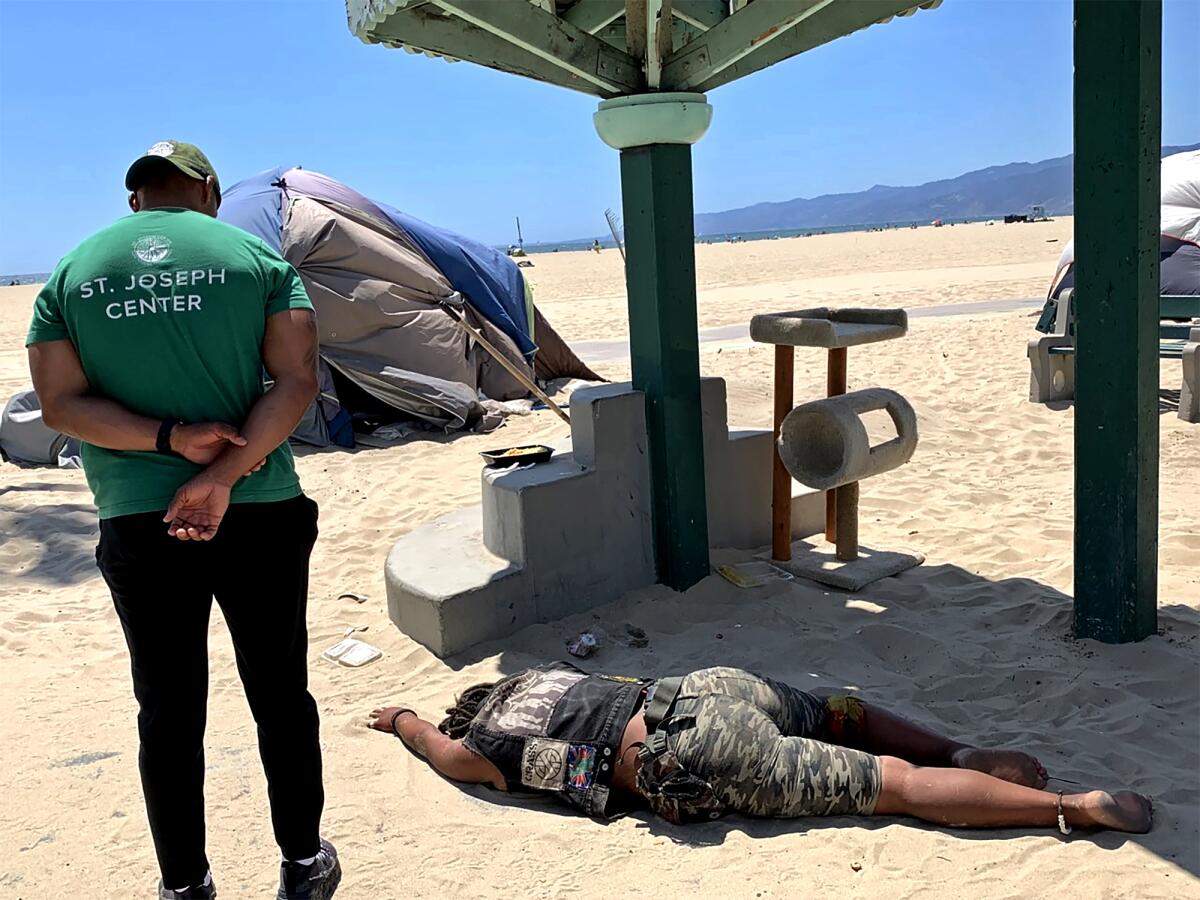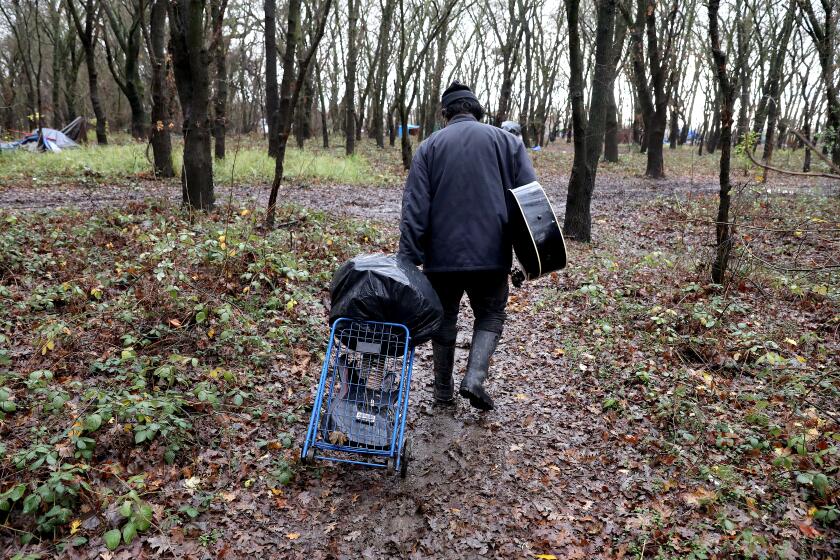Editorial: L.A. County voters agreed to another tax to reduce homelessness. Let’s make sure it does

- Share via
Los Angeles County got a gift from voters: They passed Measure A, a half-cent-per-dollar sales tax that will provide a billion dollars a year for services and housing for homeless people.
Providing the help that homeless people need is a difficult, long and expensive task, and residents clearly still believe in that mission. But they will probably expect measurable progress in the near future, especially given that this is the second tax measure county voters have passed for the purpose. The first was 2017’s Measure H, a quarter-cent sales tax now repealed and replaced by Measure A, which will generate twice the funds.
It’s imperative that L.A. city and county officials and civic leaders use that money efficiently and transparently to get people the help and housing they need. Voters tend to measure the results of homelessness programs by what they see on the sidewalk.
If we don’t want more homeless people on sidewalks, we have to invest in proposals like Measure A that stand a chance of resolving this horrible problem.
The latest homeless count did show some long-awaited progress: The number of unsheltered homeless people — those who live outside instead of in a shelter or other temporary housing — dropped 5% in the county and 10% in the city. But there are still 75,000 unhoused people in Los Angeles County, about 45,000 of them in the city of L.A.
Now the county has its best chance yet to house them in significant numbers and dramatically reduce the prevalence of encampments.
One of Measure A’s goals is to prevent homelessness, and it allocates more funding to that cause than Measure H did. It’s crucial that the flow of people into homelessness stop. Otherwise the county‘s efforts to get people off the street won’t make a noticeable difference to much of the public or come close to solving the problem.
In Sacramento, the problem has exploded from a few hundred “inebriates” in flophouses to thousands in tents and encampments. Democrats share the blame.
The county made 27,000 permanent housing placements in 2023 (a figure that represents multiple placements for some people), but the Los Angeles Homeless Services Authority estimates that an astonishing 50,000 people fell into homelessness in each of the last two fiscal years. The county’s total homeless population as of January, including sheltered and unsheltered people, was essentially unchanged from the year before, about 75,000.
Part of the challenge of preventing homelessness is just finding people who are at risk of becoming homeless. They don’t all show up at a social services agency asking for help. Janey Rountree, the executive director of UCLA’s California Policy Lab and an advisor on the measure, has tried to address that problem by developing a data-driven strategy to identify people at risk of becoming homeless.
Measure A also funds eviction defense, which can help more people win or settle cases and stay housed. It may also help more people avoid having an eviction on their record, which can make it difficult to secure new housing.
Another goal of Measure A is to reduce the number of people on the street suffering from severe mental illness, which according to the latest census afflicts more than 15,000 of the county’s homeless people. These people need immediate help in a county that is notoriously short on all levels of psychiatric treatment, from short-term to long-term. And even housing with supportive services won’t be sufficient for them until they get treatment.
Providing this kind of care is complicated by the shortage of behavioral treatment professionals. On top of that, the county and state fight over paying for it.
Measure A can’t solve all those problems, but it is expected to generate $1 billion a year, for goodness’ sake. Some of it should be spent to provide a lot of these desperately needed beds.
Of course, supportive housing — and just more housing writ large — is the ultimate solution to homelessness. The problem has always been building it fast enough and at the necessary scale.
Officials can do more on that score with Measure A money. They should look to more long-term master leasing of apartment buildings and hotels for supportive housing. And they should finance more than the typical 30% to 50% of affordable and supportive projects, which tends to leave developers spending years cobbling together the rest of the financing from other sources.
All this work is certainly challenging. But Los Angeles now has a substantial infusion of continuing, dedicated funding to make a dent in homelessness. Doing so is a pragmatic as well as a moral necessity lest the voters’ patience and generosity run out.












